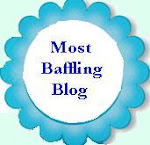Smithsonian
What kind of name is that?
Anyhow, with the major news report that comes from south of where I live, it seems fitting that the last book I read in the book group of which I am a member was We Need to Talk About Kevin by Lionel Shriver.
Kevin would say the shooter was a pathetic wimp for having taken his own life and not facing the justice that would be served against him.

5 comments:
its so strange. ive been down and out several times in my life. i live with stress but ive never once thought hey, you know what, i'll kill a bunch of people. thats a good idea.
and i was given a security audit survey this morning by my principle asking what i thought we could do to increase security on this campus.
what a world.
I received a press release from the Citizens Commission on Human Rights... it made me think:
Official warnings, such as those issued by Health Canada and the U.S. Food and Drug Administration, reveal violence and suicide as a dangerous risk of taking psychiatric drugs. These warnings, and the fact that 8 of the last 14 school shooters were under the influence of psychiatric drugs at the time of the shootings, leads one to wonder whether the Virginia school shooter was taking one or another of psychiatry’s dangerous drugs.
On April 29 1999: A 14 year old boy shot two children, killing one, at W.R. Myers High School in Taber Alberta . He was student of the school who was seeing a psychiatrist who prescribed him Dexadrine just prior to the shooting.
On May 21, 1998: Springfield , Oregon : 15-year-old Kip Kinkel murdered his own parents and then proceeded to school where he opened fire on students in the cafeteria, killing two and wounding 22. Kinkel had been on Prozac.
On April 16, 1999: Notus , Idaho : 15-year-old Shawn Cooper fired two shotgun rounds in his school narrowly missing students; he was taking a mix of antidepressants.
On April 20, 1999: Columbine, Colorado: 18-year-old Eric Harris was on the antidepressant Luvox when he and his partner Dylan Klebold killed twelve classmates and a teacher before taking his own life in the bloodiest school massacre in history. The coroner confirmed that the antidepressant was in his system through toxicology reports while Dylan Klebold’s autopsy was never made public.
On May 20, 1999: Conyers , Georgia : 15-year-old T.J. Solomon was being treated with a mix of antidepressants when he opened fire on and wounded 6 of his classmates.
On March 7, 2000: Williamsport , Pennsylvania : 14-year-old Elizabeth Bush was on the antidepressant Prozac when she blasted away at fellow students in Williamsport , Pennsylvania , wounding one.
On March 22, 2001: El Cajon , California : 18-year-old Jason Hoffman was on two antidepressants, Effexor and Celexa, when he opened fire at his California high school wounding five. Hoffman had also undergone an “anger management” program.
On April 10, 2001: Wahluke , Washington : 16-year-old Cory Baadsgaard took a rifle to his high school, and held 23 classmates and a teacher hostage while on a high dose of the antidepressant Effexor.
On March 21, 2005: Red Lake Indian Reservation, Minnesota : 16-year-old Native American Jeff Weise, reportedly under the influence of the antidepressant Prozac, went on a shooting rampage at home and at his school, killing nine people and wounding five before committing suicide.
whoops that was a long one!!
Somebody needs to figure out what to do with the Kevins of this world because if the main ingredients aren't there, well, the cake is already baked.
I like the OE's analogy there... North America's become sort of a breeding ground for these kinds of nutjobs. I don't blame video games or violence on TV. I think our governments set a poor example as to how we should be coping with dissidence on an international scale, and that example makes its way into the culture back home e.g. invoking terror or fear seems to be the answer to everything. I don't think it helps that we have a disturbingly high rate of depression or depression-like symptoms.
Post a Comment